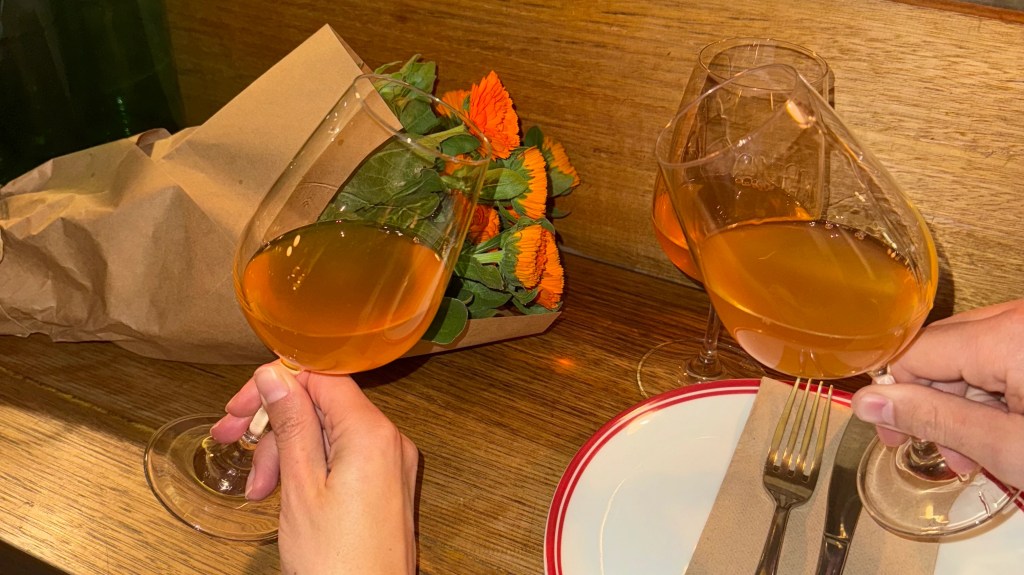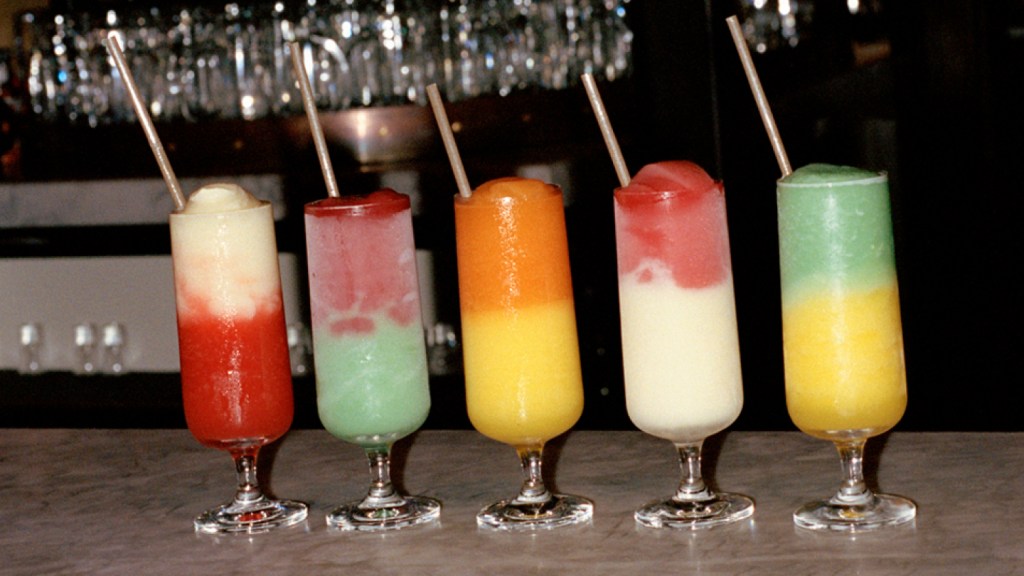Not every whiskey bar requires a ladder to access most of the bottles. At the Multnomah Whiskey Library in Portland, however, they need three.
“We have about 940 bottles of whiskey here,” explains Jordan Felix, the well-dressed, Australia-born bar manager at Multnomah. They also have an impressive selection of top-shelf tequila, gin, cognac, vodka and other spirits, he adds. But it’s whiskey—as one can deduce from the bar’s name—that is their mainstay.
Videos by VICE
Opened in 2013 by former designer and social worker turned multi-bar owner Alan Davis, Multnomah is an upscale joint, elegant in every detail. It goes way beyond the leather chairs, fine wood, exposed brick, and chandeliers. The cocktails are served in chilled glasses with perfectly cut, luxury-grade ice cubes. (Yes, there is such a thing as luxury ice.) The food arrives from the kitchen through a discrete sliding wooden panel in the wall. Their flight trays are made from discarded barrel staves. Hanging on the wall are over a dozen portraits of the most important people in whiskey, all done by local artists. They include Jack Daniels, Mary the Jewess (“the first true alchemist of the Western world”), George Washington, and Shinjiro Torii (the founder of Suntory whiskey), to name a few. Most of the menu is pretty affordable, but their most expensive offering is a single-malt Macallan Royal Marriage, with a price tag of $1,785 a shot.

But with a glut of hip whiskey bars popping up in every major city, what makes the Multnomah Whiskey Library so special? Sure, they’re fancy and exclusive (1,200 people are on the waiting list for their $600 annual membership) and have a shit-ton of nice booze, but so does the Flatiron Room in New York and the Nihon Whiskey Lounge in San Francisco.
What makes Multnomah stand out from the pack is its focus on pairing top-notch whiskey with top-notch food. Gabriel Pascuzzi, head chef at Multnomah, gets the lion’s share of his ingredients from local purveyors and farmers. All of their dishes need to pair well with their liquor selection, stresses Pascuzzi, who staged at noma.
“There’s a certain set of basics that go well with bourbon, whiskey, and Scotch,” explains the chef. “Smokiness obviously goes well—earthiness, anything charred, anything cast-iron. We have a little Japanese grill that we put charcoal in and prep things with in the back.”
The bar’s food menu—with items like elk tartare, carpaccio, Japanese Wagyu, and New York prime (you want a well-bodied whiskey with steak, says Felix)—is heavy on the meat. That’s because meat, especially gamey meat, plays very well with whiskey.

Their lamb tartare—served with shaved radishes, feta, and a house-made oregano lavash cracker—soared when paired with the bar’s expertly calibrated Old Fashioned, which a sharply dressed server prepared with a beaker and some technical-looking tools on a wheeled cart by the table. The earthy citrus of the cocktail brought out even more of the raw gaminess of the meat.
“Food is what we want to showcase,” explains Felix. “Whiskey sits in the back a little. Whiskey enhances the flavors, particularly with meat. Different whiskeys do different things. Sherried Scotches are very easy to pair with chocolate, for example.” A nice smoky Scotch paired with oysters is one of the self-trained mixologist’s favorite combinations.
Felix instructs me how to properly appreciate food and whiskey pairings. “You set your palate with the whiskey,” he says with the groomed assurance of an expert neurosurgeon. “Then you have the food, then you have the whiskey again. It’s almost like a sandwich.”
The team at Multnomah thinks hard about its menu. “Recently we all sat down and tasted all the beefs, and had a roundtable discussion about which whiskey we wanted to drink with each one, and the fattiness and flavor notes in them,” says Pascuzzi.

The Oregon-raised chef treats his food, especially meat, as Felix does the whiskey: with exacting scrutiny and an acute attention to detail. “We know where the farm is, how the cows were fed—was it pasture-fed, grain-fed, fed with composted vegetables? How were they finished? What was their terroir, if you will?” says Pascuzzi. He does the same for every ingredient.
Felix and the rest of the bar staff certainly do the same with the whiskey. Just take a look at the spirit catalogue, which Felix refers to as “the Bible.” Each whiskey is marked with every detail of its origin, down to the barrel number. “We only carry things that we know 100 percent how they make it. We need to know the production process,” says Felix.
And that’s not limited to whiskey. For the bar’s tequila and mezcal offerings, the individual agave type, extraction, cooking, and distillation method are listed next to each bottle. “We’re like detectives trying to find out what’s really going on with our products,” he says.
With its Old World charm, portraits of dead aristocrats and leather armchairs, you very well might feel very Sherlock Holmes-y if you go there. If you manage to snare a reservation, get a whiskey drink, sit down in a comfy chair, and pretend that it’s 1815. And make sure to order some food.


